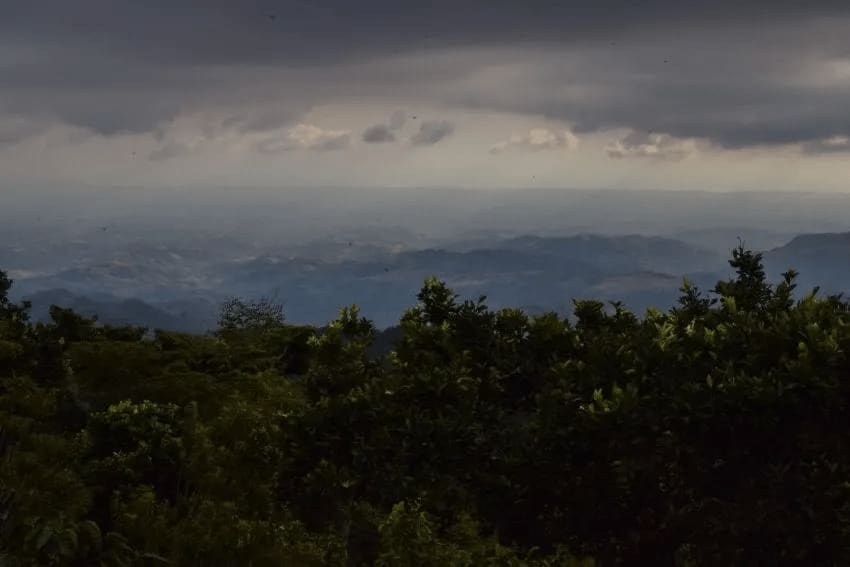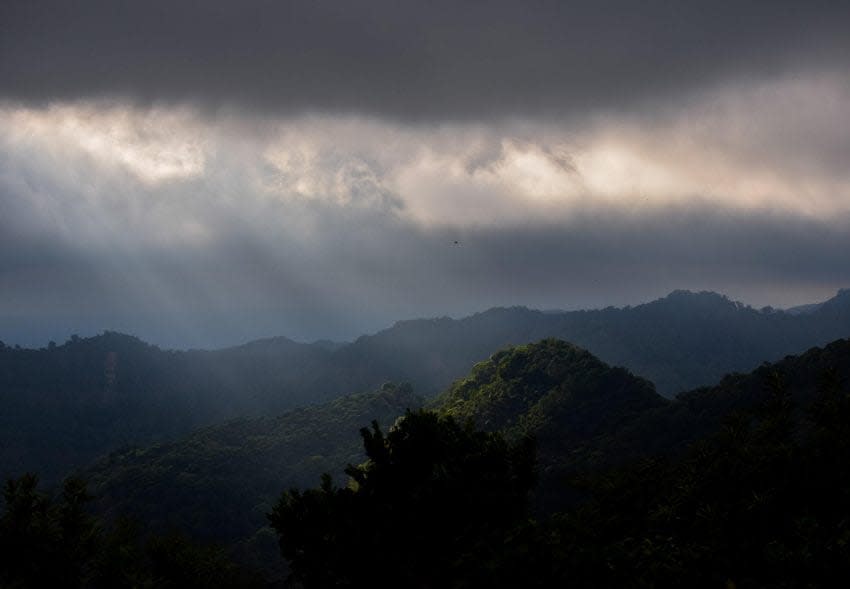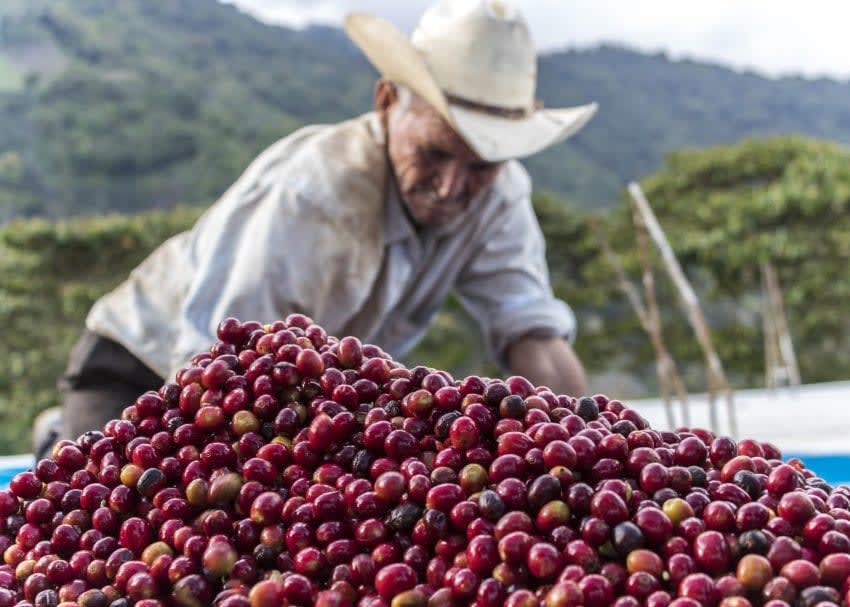What you don't know about coffee: the black history of slaves behind the coffee industry
Professional coffee knowledge exchange more coffee bean information please follow the coffee workshop (Wechat official account cafe_style)
When you get a bag of roasted Brazilian coffee or order a cup of Colombian handcups, you may get complete information about the producing areas, but have you ever thought about the origin of these coffees in the first place? Who were the workers who first developed these farms and built them into gardens?
Let's take a look at the history of the coffee industry and its relationship with race and colonialism.

El Salvador Coffee Manor. Source: Fernando Pocasagre
Coffee and colonialism
Coffee originated in tropical Africa, but now Brazil is the world's largest coffee producer. Vietnam and Colombia are the second and third largest producers. Before coffee was brought to America by European colonists, it was traded in the Middle East, Asia and Europe, and the success of this crop had something to do with slavery. Therefore, there is no way to look at the history of coffee without recognizing the role of racism and colonization.
Mark Pendergrast, author of long live Coffee: how small Coffee changes the World, said that at the end of the 18th century, European colonists began to recognize the profitability behind coffee, and European and colonial demand for coffee was very high. In order to build profitable estates, European companies imported large numbers of slaves from Africa to work on farms in the Caribbean, Asia and America. The so-called triangular trade.
Barbados and Jamaica were the earliest British colonies, and slave traders provided labor from Africa to outposts to process sugar and grow coffee. The colonies of West Africa, the Caribbean and America, and Europe formed a triangle to circulate goods and labor.

Bagged raw beans stored in the warehouse
Mark says Santo Domingo, the capital of the French colony of Haiti, supplied half the world's coffee in 1788 as a direct result of slave labor. He described the shocking living conditions at that time, in which slaves were often underfed, overworked and arranged to live in windowless huts, and he detailed that it was not uncommon for African slaves to be beaten, tortured and killed by white European rulers.
Napoleon's failure to recapture Haiti in the early 19th century led to a decline in coffee production, prompting the Dutch to fill the gap with coffee they produced in the Indonesian colony of Java.
There is a strict grading system between the local Javanese and their colonial rulers. In his book, Mark recalls that the Dutch civil servant Eduard Douwes Dekker wrote that the laziness and apathy of the Dutch who owned the land forced the Java natives to harvest coffee on a meagre income. Dekker pointed out that the entire village died of hunger.

Coffee beans dried on the scaffolding
The slave trade in America
With the decline in coffee production in the West Indies, it is also booming in South America. It is reported that Brazil's first coffee tree was planted in Pala by Francisco de Melo Palheta in 1727. Brazil will continue to be a coffee superpower under the rule of Portugal and continue to develop after independence. By the 1830s, coffee had become Brazil's largest export, accounting for about 30% of the world's coffee production. But it requires huge labor costs.
Brazilian coffee plantations rely on slave labor made up of blacks and natives. Mark said that indentured labourers work and live in terrible conditions, and planters regard their workers as dispensable, and they find that when they die of overwork, they import new slaves directly, rather than treat their existing slaves with any compassion. He said that most slaves could not survive seven years of labor.
Slavery was not considered illegal in Brazil until 1888, but before that, more than 4 million slaves had been brought to Brazil from Africa.

Ripe coffee fruit. Source: Fernando Pocasagre
In other parts of South America, the coffee industry relies more on the labour force of indigenous peoples. "in Central American countries, blacks are not treated as slaves, while Mayans and other indigenous peoples are semi-slaves," Mark said.
He said the Mayans occupied fertile land, which was best suited for growing coffee, so they were increasingly disenfranchised by the colonial government. As demand for coffee grew, they were violently expelled by the military and forced to work for their oppressors.
Mark says revolutions and rebellions are common these days, and governments often respond with atrocities and repression.

El Salvador Coffee Manor, Source: Fernando Pocasagre
The influence of colonialism on the legacy of coffee
Understanding the foundations of the coffee industry in South America can to some extent explain why this part of the world still dominates coffee production. Although slave labour was no longer used, the existing structure paved the way for today's industry. Think about how many regions in Brazil and Colombia still rely on traditional coffee cultivation and agriculture as their main source of income.
In an article by Sprudge, Phyllis Johnson stressed that the legacy of colonialism in the coffee supply chain is still obvious. She described the racial differences she saw between farmers and labourers during a trip to South America.
When we talk about the decline in the price of coffee in the United States, we are talking about "millions of people in South America, Asia and Africa living in poverty in order to make coffee affordable in Western markets."
Although some African coffee is touted as the best coffee in the world because Africa is the birthplace of coffee, coffee production on the African continent has never reached the same level as in South America. This is also related to colonialism because many former European colonies did not have a strong infrastructure and stable political system at the end of the occupation.

Honduran farmers pick coffee fruits
We have a responsibility to pay more attention to structural racism and recognize that the problem still exists in the supply chain. Solving this problem may be uncomfortable, but it is important to be frank and open to discussions about inequalities in coffee production and racism.
Pay attention to where you spend money. In addition to reading the information on the coffee bag, you should also learn about the relationship between your baker or store and the producer, and discuss the economics of coffee with baristas and others at the end of the supply chain.
Knowing more about the political situation in coffee-producing areas and knowing more comprehensively can help you make choices that benefit coffee producers and communities in producing countries. These actions seem small, but they help to improve the sustainability of related industries, the working conditions and quality of life of workers.
Translated from Perfect Daily Grind, translated by True Coffee
END
Important Notice :
前街咖啡 FrontStreet Coffee has moved to new addredd:
FrontStreet Coffee Address: 315,Donghua East Road,GuangZhou
Tel:020 38364473
- Prev

It's not easy to be a barista. You have to play an instrument in addition to making coffee.
Professional coffee knowledge exchange more coffee bean information Please follow the coffee workshop (Wechat official account cafe_style) from time to time some people ask the editor: how can I become a barista? We know that in English, baristas are called Barista. In the past, the word Barista was used to refer to an expert in making related drinks such as espresso. Even earlier, coffee
- Next

Brazilian coffee beans, Brazilian origin, Brazilian flavor.
When it comes to Brazilian coffee, we all know that Brazil is the world's largest coffee producer and the world's second largest coffee consumer (the first is the United States), so where does Brazilian coffee come from? What are the coffee producing areas and famous estates in Brazil? Which varieties are mainly planted and how to grade them? Today, the editor is here to share with you the World Coffee Tour Coffee Giant Ba.
Related
- How did the Salvadoran coffee industry develop in Central America?
- What exactly does the golden cup extraction of coffee mean?
- The Origin of Coffee flower
- [2023 Starbucks World Earth Day] there are more meaningful things besides free Starbucks coffee!
- What kind of coffee is there in Spain? 9 Flavors of Spanish Coffee
- Aromatic African coffee| Kenya's coffee culture and historical production area
- Liberica Coffee Bean knowledge: the characteristics of Liberian Coffee beans of the three original species of Coffee beans
- The origin and formula of Spanish latte introduces the taste characteristics of Bombon coffee in Valencia, Spain.
- How to adjust the solution of over-extracted coffee
- What is the tasting period of coffee beans? What is the period of coffee and beans? How should coffee wake up and raise beans?

